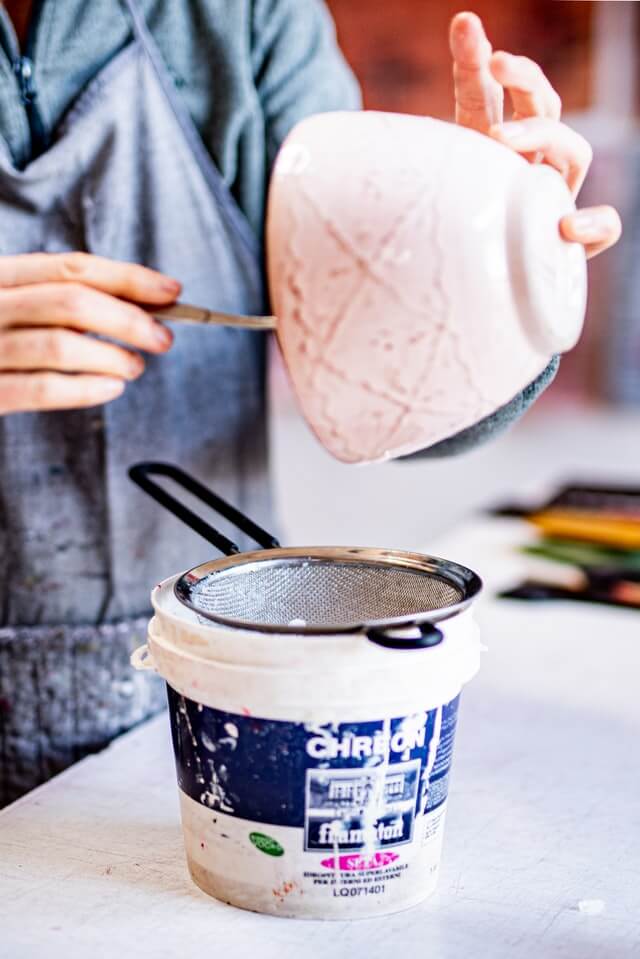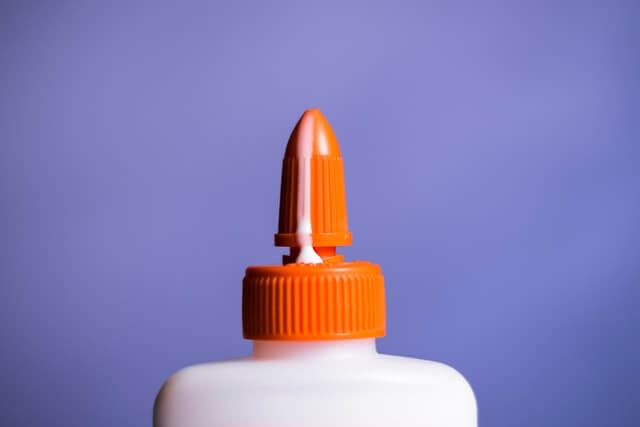Still looking for best epoxy for toilet tank repair?
A toilet consists of two parts – the bowl and the tank. The bowl is a solid item usually made of porcelain and rarely needs repair work. The tank, on the other hand, is more prone to malfunctions as it includes more parts and is more fragile.
The tank has two valves and a handle triggering the flush action, and multiple problems can occur with these parts. There is also the possibility of the toilet tank developing cracks. This will further cause leaks on the bathroom floor which are unpleasant and represent a slipping hazard.
The good news is that most toilet problems can be easily fixed.
You can replace parts and seal cracks with the best epoxy for toilet tank repair.
You won’t even need the help of a plumber to solve the most common toilet problems!
What are the most common toilet tank malfunctions?
Toilet tanks have different flushing mechanisms, with newer toilets having completely distinct designs. Here are the most common issues that you may encounter with your toilet:
- Defective ballcock
- Flush valve malfunction
- Running toilet
- Loose flush handle
- Cracks in toilet tank above or below the water line
Cracks in the toilet tank are difficult to identify and repair. There are two solutions: repairing with epoxy or replacing the toilet tank.
How to find cracks in your toilet tank?

The first sign of a toilet tank crack is finding water on the floor near the toilet. The location of the crack determines the type of action that is needed.
- Crack above the water level
A crack above the water level is not a huge problem unless it starts to grow. Monitor the crack to make sure it doesn’t get worse. You can take a picture of the crack so you compare it later.
- Crack under the water level
Cracks under the water level represent a problem as they cause serious leaks. This kind of crack needs to be fixed as soon as possible. Check the tank both inside and outside and also look at the seals between the tank and the bowl. They can also be responsible for leaks.
What causes cracks in your toilet tank
Toilet tanks are never completely crack-proof. This issue can occur at multiple moments:
- During manufacturing;
- During transportation and maneuvering;
- In time after prolonged use;
- After a heavy object falls on the tank;
- When the tank lid is accidentally dropped.
Cracks developing during the manufacturing process can stay hidden for years and surface a lot later. In porcelain toilet tanks, cracks can occur due to extreme temperature changes.
Can cracks be repaired?

If you are dealing with a hairline crack, waterproof epoxy can easily solve the problem. Apply epoxy according to instructions and chances are you will keep using the tank for multiple years. Epoxy can also be effective for cracks at the base of the toilet bowl. [1]
The situation is different for larger cracks. You can attempt to repair them, but the result is not guaranteed. In the end, you may have to replace the toilet tank.
It is vital that you repair hairline cracks under the water soon, before they penetrate the glazing. Cracks that cause water to leak should be dealt with soon, too. Nobody wants to end up with a toilet out of service.
How to repair toilet tank cracks?

Toilet tank crack repairs are simple to perform, but require patience and dexterity. You will need to complete the following steps:
- Empty the toilet tank
Turn off the water supply shutoff valve, flush the tank, and let it dry completely. This can take several hours. Speed up the process by wiping the remaining water with a towel.
- Clean the crack area
Remove debris and grime from the crack and its surroundings. The area should be perfectly clean.
- Prepare the epoxy
Mix the epoxy according to manufacturer’s instructions. The epoxy has two components: catalyst and resin.
- Apply the epoxy
Use a putty knife or spreader to apply the epoxy. Make sure you don’t exceed the material’s working time, which is usually 30 minutes.
- Put back the broken piece if applicable
The broken piece goes back into original position, making sure the excess epoxy oozes out of the crack. Also remove excess epoxy with a knife before it hardens.
- Reinforce the repair
Consolidate the repair with fiberglass mesh tape. Apply it inside the tank where it cannot be seen.
- Touch-up the exterior
If the crack is visible on the exterior, apply ceramic paint so the crack is not visible anymore.
- Wait until the cure time passes
Check the cure time of the product on its instructions. After the epoxy has cured you can turn on the water shutoff valve. This action will re-fill the toilet tank with water.
Flush the toilet and check for leaks.
Best epoxy for toilet tank repair

1.Epoxy Putty Stick
The Epoxy Putty stick has multiple uses:
- Sealing pipes
- Fixing leaks in tanks and drains
- Applying a variety of parts such as tools, toys, automotive parts, and furniture.
It can be used on a variety of materials, such as wood, glass, ceramic, fiberglass, plastic, stone, and metal.
How to use the Epoxy Putty stick:
- Mix the two components of the product and use them within 10 minutes;
- Wait for 24 hours curing time.
The product’s viability is one year.
Pros
- Easiness of use;
- Can be applied to uneven surfaces;
- Has great adhesion;
- Has solved problems that similar products were ineffective at;
- Used by professionals and repair businesses.
Cons
- It needs to be mixed in your hands, an aspect which some users may not like. Also, it is applied with your fingers;
- May not adhere to certain softer plastics;
- Has an unpleasant smell, which is common for epoxy sealers anyway;
- Dries up a little too fast.
Check Price and Reviews on Amazon
2.Loctite 1919324 Marine Epoxy 0.85-Fluid Ounce Syringe
Loctite is a trusted and renowned adhesives brand and you cannot go wrong with their products. For toilet tank repairs, Loctite offers the Marine Epoxy Fluid with the following features and corresponding benefits:
- Machinable
The dry epoxy will not crack when drilled.
- Highly durable
The product is water and solvent resistant.
- One-time application
The epoxy from Loctite does not shrink, which means you don’t have to reapply it.
- Precision
The two components are released from syringes, enabling you to disperse the same amount every time.
- Curing under water
You don’t have to wait for the product to cure until you are allowed to refill the toilet water tank.
Pros
- The surface treated with this epoxy can be sanded, resulting into a nice finish;
- Recommended for continuous underwater use (including toilet tanks cracked under the water level);
- Dries as hard as a rock with little curing time required;
- One of the hardest and strongest epoxies ever.
Cons
- The fix is visible, and you need to apply paint over it;
- Takes longer to cure underwater;
- May not work properly on certain types of plastic;
- Is very fluid and you may need to wait 10-15 minutes before using it.
Check Price and Reviews on Amazon
3.PC-Products PC-11 Epoxy Adhesive Paste
The main differentiator for this product is the PC-11 formulation. This means the user can reposition work or make changes, even in large and critical jobs.
Other features of the PC-Products PC-11 Epoxy Adhesive Paste include:
- Bonding with multiple materials
The materials that the PC-Products epoxy bonds with are ceramic, rubber, metals, glass, concrete, and fiberglass among others.
- Large temperature range
The product can be applied within a temperature range of 35 to 115 degrees F and withstands a service temperature range -20 to +200 degrees F.
- Suitable for vertical and overhead applications
This epoxy does not drip, enabling you to apply it in the most inaccessible areas.
- Resistant to corrosive agents
The cured epoxy can resist multiple substances, such as salt water, fuel oil, gasoline, detergents, caustics, and mild agents.
Pros
- Excellent value for price;
- Reviewed by users as one of the best epoxy mixes ever used;
- The repairs withstand a high pressure;
- Does not sag on vertical surfaces;
- Can be cleaned off tools with denatured alcohol.
Cons
- The product is thick and can be difficult to mix by some users;
- Needs about 24 hours to set really hard;
- Some buyers did not like the pale green color of the epoxy after it cures;
- The product needs to be mixed thoroughly to ensure the success of the job;
- You need to apply the PC-Products epoxy quickly because its workability goes down fast.
Check Price and Reviews on Amazon
Bottom line
Not all toilet tank cracks are the same and neither epoxy repair kits are all alike. In order to conduct a successful repair of your toilet tank, you will need to pick the right product.
Performing the repair carefully and with patience is also important. Without carefully going through each step of a correct repair, the best epoxy for toilet tank repair can be useless.

Michael Davis is a heating & plumbing expert who currently works as independent contractor in SC. He also writes for Plumbertip.
For almost 10 years he worked on various plumbing tasks across South Carolina.



